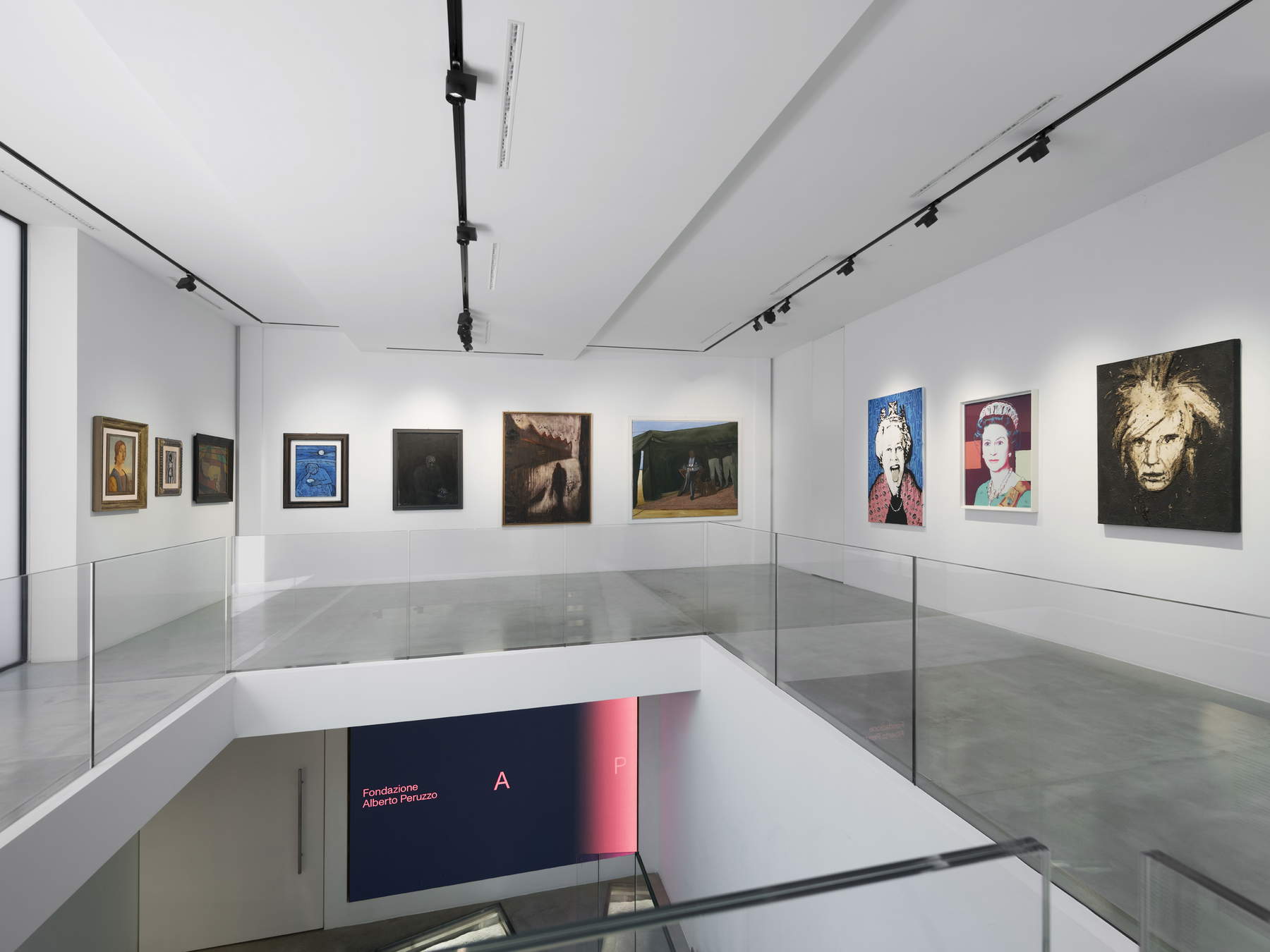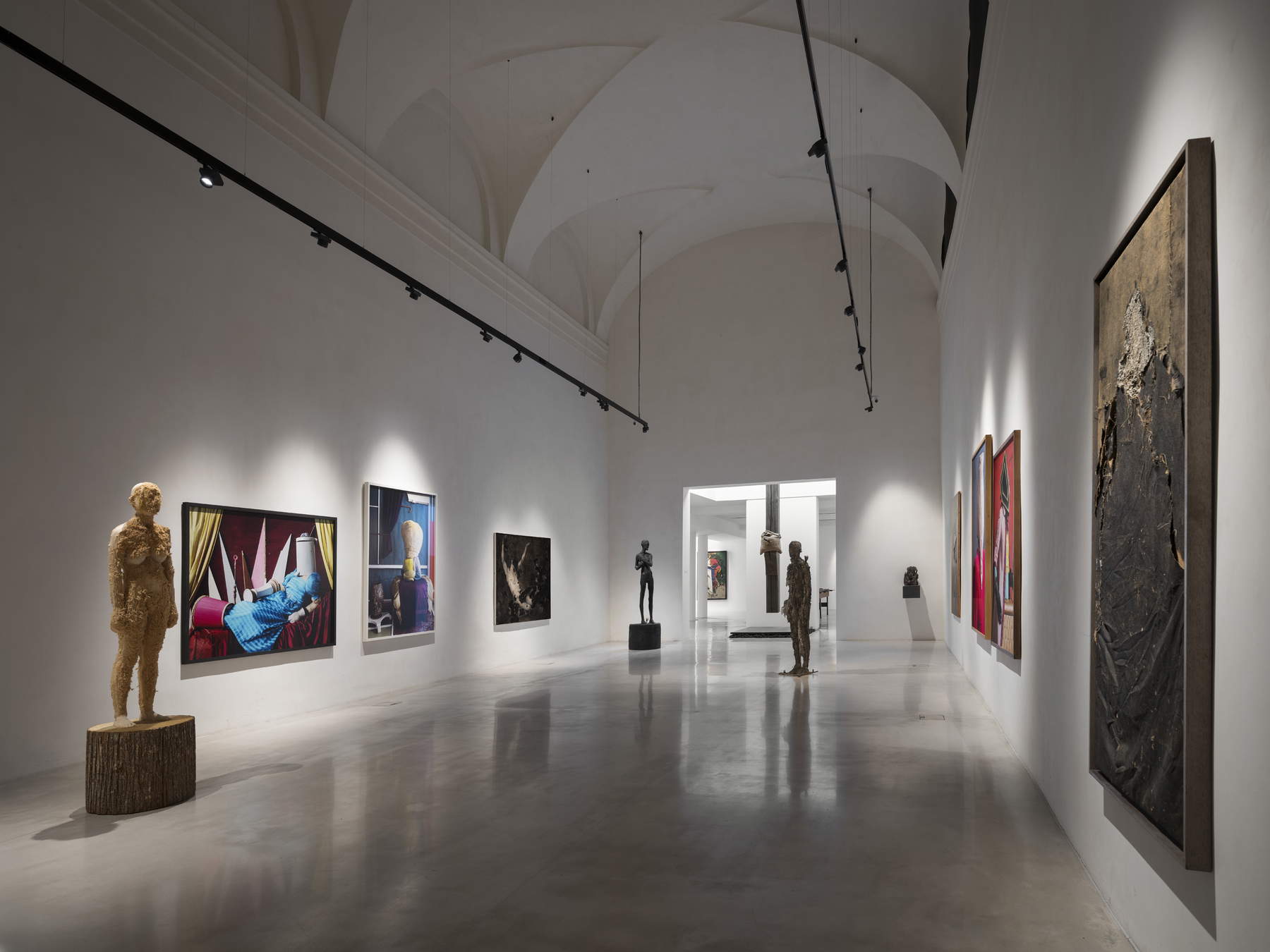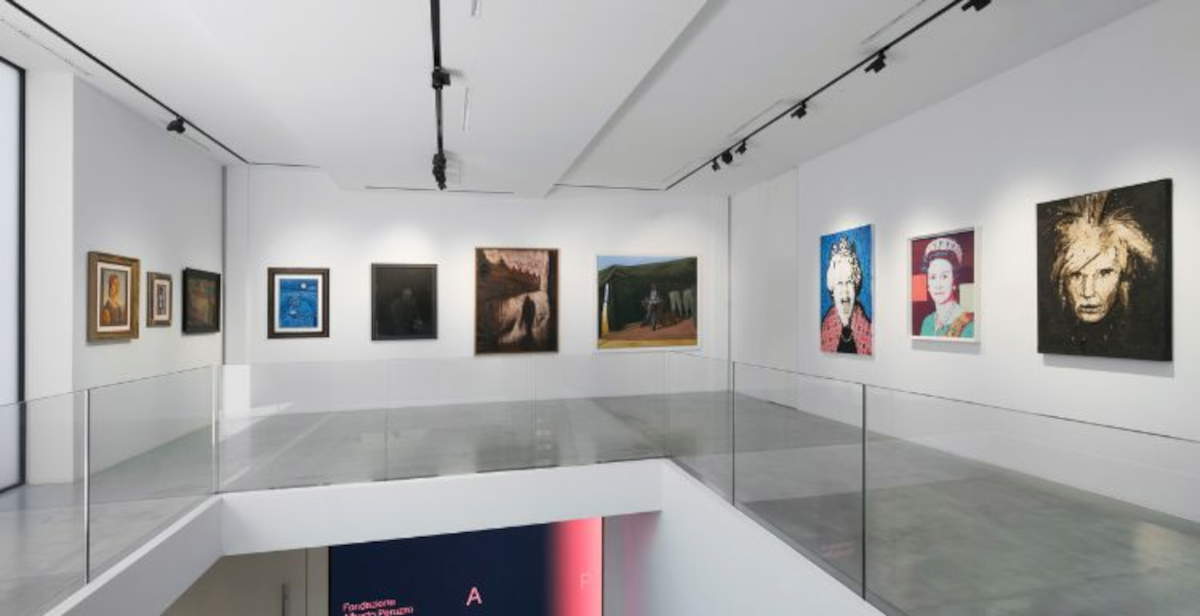From June 19 to October 5, 2025, the Alberto Peruzzo Foundation hosts Damnatio Figurae: From the Negation of the Image to the Portrait, an exhibition that interweaves the language of the portrait with the theme of identity and its representation. The project, curated by director Marco Trevisan, takes place in the spaces of the Nave and Sacristy of theformer Church of Sant’Agnese in Padua, the headquarters of the Foundation, and begins with a reflection around a single work: Untitled (1996) by Jannis Kounellis. Placed permanently in the area once designated for the altar, Kounellis’ work takes the form of a four-meter-high secular cross, formed by a beam and a jute sack pierced by a dagger. Its intense and silent presence has accompanied every installation hosted by the Foundation, becoming part of the visual and symbolic fabric of the place. In it, according to Trevisan, a “poetics of secrecy” manifests itself: the material evokes, but does not show; the figure is absent, and for that very reason powerful.
Around this core, the path of Damnatio Figurae takes shape, questioning the visitor about the nature of the image and its influence in the construction of reality and the perception of the other. The more than thirty works on display question the very idea of figure and representation, alternating between absence and presence, evocation and portrait, introspection and theatricality. The title recalls a historical and theoretical reflection: damnatio figurae is understood as the negation of the image, not only in the iconoclastic sense, but also in relation to the problematic power of images in contemporary society.

“The term ’damnatio figurae’ refers to a denial of images, a theme that relates to historical debates not only about iconoclasm, but in general about the use of visual representations,” explains Marco Trevisan "Riccardo Falcinelli in Visus (2024) for example discusses how images can be both powerful and problematic, analyzes their role in society, and invites reflection on how people’s images can be manipulated and the emotional and social impact this creates. It has increasingly become a reflection on identity and the relationships each of us enacts in society: we are social animals and each of us plays multiple roles in our daily lives."
In the Nave, works by contemporary artists exploring the absence of the figure and the concealment of identity are presented. Aron Demetz, with his sculptures made of burned wood and altered bronze, creates presences in which the gaze is elusive, tipping the focus toward interiority. Nicola Samorì, starting from Baroque painting, deforms and corrodes pictorial and sculptural matter, opening up disturbing readings. Thorsten Brinkmann reinterprets Renaissance portraits with irony and deconstruction, while Mariano Sardón experiments with algorithms and codes, thanks in part to his collaboration with neuroscientist Mariano Sigman, to create images that interrogate the mechanisms of vision. Finally, Manolo Valdés works on the evocation of the figure through techniques such as collage and the use of salvaged materials.
The second section, housed in the Sacristy, brings together a selection of portraits from the Foundation’s collection. Prominent among them are Andy Warhol’s Reigning Queens (1985), featuring the official and colorful portrait of Elizabeth II, placed in dialogue with two images of the same sovereign: a more pop and irreverent one by the street artist Endless and a more textural and introspective one created by Enzo Fiore. This creates a confrontation between representations of authority and the person, the public figure and the private one. The path continues with Kuwana city (1990) by Donald Baechler, an example of his Neoexpressionist approach, in which human figures are reduced to primary signs and essential colors, emphasizing the ambiguity of the face and figure. Felice Casorati is present with two paintings, Woman with Bowl (1959) and Nude in Landscape (1954), in which the focus on the female figure is manifested through an austere and contemplative beauty. In sharp contrast, Tom Wesselmann’s Barbara and the baby (1979) proposes a pop and sensual vision, played out in stark colors and simplified forms.

Among the more experimental works is Portrait with Green Background and Beige Traces (2005) by Valdés, who transforms the portrait into a layered evocation of memories and cultures. Max Ernst intervenes with a surreal image in which the face is reduced to a balloon, breaking all realistic expectations. The theme of the portrait also extends to other artists in the exhibition: Giorgio de Chirico, Julio Larraz, Sandro Chia, Fernando Botero, Zoran Music, and Mimmo Paladino. Each offers a personal declination of the figure, which becomes, after the invention of photography, increasingly a tool for interrogating identity and relationships.
The exhibition closes with Stadium - exhibition copy by Maurizio Cattelan: a seven-meter-long installation sculpture in the shape of a foosball table, designed for matches between 22 players. The work becomes a neutral field in which to observe the social roles on stage, a game that does not judge, but reflects everyday anesthesia, in the words of the artist himself. As with every Foundation exhibition, a Notebook, with critical insights and theoretical reflections, will be published for Damnatio Figuraes, and will be distributed in the coming weeks in the new bookshop.
 |
| The portrait between absence and identity in the exhibition "Damnatio Figurae" in Padua |
Warning: the translation into English of the original Italian article was created using automatic tools. We undertake to review all articles, but we do not guarantee the total absence of inaccuracies in the translation due to the program. You can find the original by clicking on the ITA button. If you find any mistake,please contact us.